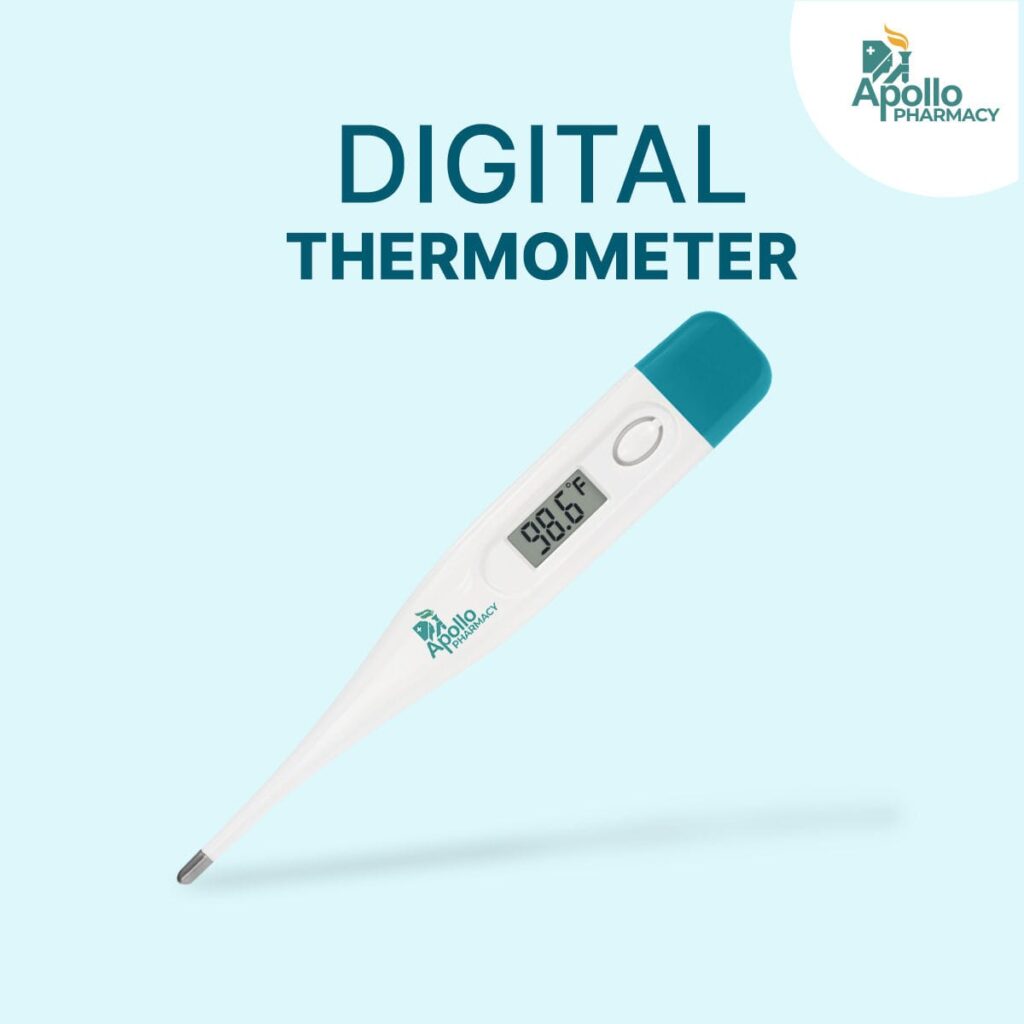
Digital thermometers offer a convenient, safe, and reliable method for measuring body temperature. They come in different types, such as oral, rectal, ear, and forehead thermometers. The reliability of digital thermometers is marked by higher precision, faster results, and safety compared to other thermometer types.
Digital thermometers have improved temperature monitoring due to their exceptional accuracy. They are a popular choice worldwide and used when our bodies are combating infections, which result in conditions like fever raising our body temperature. These devices monitor the elevated temperature and help people to regulate their overall health. They are portable, allowing for convenient use anywhere and at any time.
How Do They Work?
A digital thermometer uses heat sensors to measure body temperature. Digital thermometers are used orally through the mouth, ear, underarms, forehead, and rectum. These are easy to use and give readings on display and digitally. You can buy digital thermometers at shops or online.
Types of Digital Thermometers:
a) Generic Digital Thermometer: being the most common, a generic thermometer offers a reliable method of measuring body temperature.
Oral Measurement: Place the tip of the thermometer under the tongue, close your mouth, and wait for the time as instructed by the manufacturer (it is mostly 40 sec). This method is commonly used and suitable for most individuals, including adults and older children.
Rectal Measurement: This method is often used for infants and young children and is considered one of the most accurate ways to measure body temperature. To use it, apply a lubricant or petroleum jelly to the tip of the thermometer and carefully insert it into the rectum, not more than 1 inch deep. However, read the instructions provided by the manufacturer for the recommended insertion depth.
Armpit Measurement: Another option is under the armpit. Place the thermometer in the armpit and press the arm against the body for a proper reading. Since this method is less invasive, it may be slightly less accurate than oral or rectal measurements.
b) Tympanic Thermometer: Also known as an ear thermometer, a tympanic thermometer uses a probe into the ear canal. While more expensive, it requires careful handling and precise positioning to ensure an accurate reading.
c) Infrared Thermometer: An infrared thermometer is contactless and measures body temperature by scanning with an infrared scanner, typically on the forehead.
| Temperature Classification | Fahrenheit (°F) | Celsius (°C) |
| Average Normal | 98.6°F | 37°C |
| Normal Range | 97°F – 99°F | 36.1°C – 37.2°C |
| Fever | Over 100.4°F | Over 38°C |
Reliability of Digital Thermometer:
A digital thermometer offers several advantages over other thermometers:
- Higher Precision: Manufacturers calibrate digital thermometers by comparing them with standard reference thermometers to ensure accurate temperature readings. A digital thermometer is highly accurate, with a margin of error typically ranging from ±0.1 to ±0.2 degrees Celsius.
- Faster Results: Unlike a mercury thermometer, which requires longer measurement times, a digital thermometer offers instant temperature readings.
- Safety: A digital thermometer is safer as they do not have mercury in them, which removes the risk of exposure to toxic substances. Typically, all types of digital thermometers are made of plastic, reducing the risk of injury from broken glass.
Factors Affecting Accuracy:
While a digital thermometer is generally reliable, several factors can influence its accuracy:
- User Technique: It is essential to use a digital thermometer correctly for accurate readings. Follow the instructions, such as placing it correctly and using it for the recommended duration, to achieve optimal accuracy.
- Ambient Conditions: Extremely hot or cold temperatures or high humidity levels can affect the accuracy of a digital thermometer. Allow a digital thermometer to adjust to room temperature before use.
- Battery Life: Low battery levels can impact the readings. Make sure you regularly replace or recharge the batteries to maintain optimal functionality.
Tips for Ensuring Accuracy
Use these tips to maximize the accuracy and reliability of a digital thermometer:
- Cleanliness: Always keep your thermometer clean and sterilize the tip by washing with soap and then rubbing it with alcohol.
- Calibration: Periodically check the thermometer’s accuracy against a reference thermometer, if available, to ensure consistent readings.
- Replacement: Over time, a digital thermometer loses its accuracy. You should replace them every few years or as recommended by the manufacturer.
- Hand Hygiene: Wash your hands with soap and warm water before using the thermometer.
- Placement: Place the thermometer under the tongue for oral measurements and keep your mouth closed for around 40 seconds. Ensure the thermometer beeps to indicate completion.
In conclusion, digital thermometers are better than other thermometers. They are convenient, portable, and offer digital readings. It is best to buy a digital thermometer if you are looking to buy one for personal home use.
References: https://www.mayoclinic.org/diseases-conditions/fever/in-depth/thermometers/art-20046737
https://health.clevelandclinic.org/thermometers-how-to-take-your-temperature/
